Tips
Survey School 1: Forms and questions
Dive into the first installment of our survey school, where we'll cover how to learn more about your customers by asking better questions. Follow our 10 research-backed guidelines for writing better questions to unlock more and better insights.

Done right, forms and surveys can be a conversation between you and your prospects and customers. They can be chatty and intimate. They can be the start of something substantial and lasting.
And they can also be a cornucopia of in-depth, rich, and actionable zero-party customer data that' ll transform your marketing strategy, messaging, and results.
It all comes down to the questions you ask, and how you ask them.
At Typeform, if there’s one thing we know, it’s how to ask great questions. So here’s our data-backed deep dive into how to write the kind of surveys* that your customers deserve. In this guide, you’ll learn:
- How to write better questions—the ones that customers and prospects will be delighted to answer
- How to use logic to create a conversational journey
- How to drive action with great wrap-up CTAs
- How forms can improve your marketing results across the entire customer journey
*By surveys we mean forms, surveys, quizzes, polls... you get the picture.
Types of questions
When you’re writing a survey, it’s easy to forget how many different types of questions there are—especially if you’re using a typeform. Here are the options available:
Practical information
- Contact info—the nitty gritty, like phone numbers, email addresses, or websites
- Meeting scheduling—preferred dates and times, or a link to Calendly, to set up a meeting
- Payment—yup, you can totally take payment with a form
- Legal—gotta check that box too!
Expressing opinions
- Rating and ranking—let people put choices in order, give a rating from one to ten, or rate multiple different row items with the same criteria
- Choices–multiple choice, yes/no questions, a dropdown—or even a choice between different pictures (that’s a fun one)
- Text—choose between a short or long text box to let people write what they want
10 rules for writing questions that people want to answer
What you ask matters as much as how you ask. In this section, we’ll break down how to ask the right questions to increase response rates and create a positive user experience (and lasting brand experience).
Here are our 10 research-backed guidelines for writing better questions:
Rule #1: Be focused
Before you even start to write your questions, you need to know exactly why you’re asking them. We aren’t just collecting answers for the sake of having a ton of answers. We’re trying to answer a specific question—what our customers like about our products, for instance, or how our users feel about our demo.
So, before you jump into writing the questions:
- Define the objectives for this particular form or survey
- Decide how you’ll use the data gathered from each response
Consider why someone would be interested in completing the form—will you offer an incentive, or will it improve something about their experience?
Rule #2: Be reassuring
A recent survey found that security concerns are the number one reason for form abandonment.
So your first priority when you’re writing form questions is to reassure your users that you’re legit, with no intention of using their data for nefarious purposes. Here’s how to do that:
1. Give them context with a great Welcome screen.
The Welcome screen is the perfect way to explain the purpose of the form, how you’ll use the data, and what the benefit is for the user. We recommend using active, direct language on your Welcome screen. Our research shows that questions on the Welcome screen can be off-putting, but numbers and personalization go over big.
For more on using Welcome screens to get more responses, see our article: “Research-driven tips to power up your lead capture typeforms”
2. Include an introductory statement before each question.
Our research shows that you can improve response rates by giving users a long preamble before asking each question—then keeping the questions themselves concise. Explain why you’re asking what you’re asking, so they see the motivation behind it. You need to guide the experience by telling your user what is about to happen.
For example: “Now I’m going to ask you a few questions about your food habits to find out if you’d be a good fit for our new glucose monitor. This next bit should only take you 2 minutes.”
3. Use the Progress bar
Let users know how much time the form will take and how much is left for them to complete. This reduces form abandonment because people don’t start to despair that they’ll never finish. Additionally, it can trigger “completion bias”—that feeling of “Oh well, I’ve nearly finished. I might as well get the whole thing done.”
Rule #3: Be direct
Dr. Elizabeth Stokoe is a conversational analyst and an expert on asking better questions. She gives a great example to illustrate why you need to be direct and to the point when you write survey questions:
A window sales rep is on the phone with a potential client.
He asks her, “Should I address you as Ms., Mrs., or Miss?”
She replies, “Mrs.”
He then asks, “And will your husband be there when I come by to give you the quote on your new windows?”
And she replies, “No, I’m a widow.”
Argh, right? Now, instead of a positive chat about windows, they’re both sitting in awkward silence.
The problem, Stokoe explains, is that the salesperson avoided asking what they really wanted to know. The result was that the client felt obliged to share personal information they might not have wanted to share, creating a mutually uncomfortable experience.
The same thing can happen on forms. While your users might not feel any social pressure to share personal information, a confusing or indirect question is unlikely to produce the answers you need.
Stokoe says to avoid this situation, ask yourself, “What is the information I’m actually looking for? Could I ask for it more directly?"
For instance, in our example, the window salesperson really wanted to know if there would be another person making buying decisions in the household. In other words, would they need to persuade this customer’s spouse to buy windows, too? A more direct question might be: “Is there anyone else you feel should be at our quote appointment?”
Rule #4: Be empathetic
If you want great answers, you need to put yourself in your user’s shoes. Here are three ways to write more empathetic questions:
1. Highlight “What’s in it for me”
Ali Grimaldi and Tzeying Cheng are the two UX professionals behind the Bellini Slushie question bank. They’ve written hundreds upon hundreds of market research surveys, and stress that the secret to getting more responses is ensuring people want to complete your survey. Respondents must feel like they’re going to get something valuable from spending a few moments of their time on this. Can you offer an incentive? Make it fun? Provide exclusive content?
2. Practice recipient design
When we talk to people, we naturally customize our tone, vocabulary, and questions to suit the person we’re talking to—a process that conversational analysts call “recipient design.” While this can be harder to do digitally, it’s far from impossible:
- Avoid wording your questions in ways that make assumptions. For instance, “What is your web URL” assumes that all your users have a website. Instead, try “Do you have a website?” followed by a second question if they say yes.
- If you’ve already gathered information about a user, use form logic to ensure you only ask relevant questions (more on that in the next section).
3. Ask questions people can actually answer
Make sure that your users can answer each question easily. For instance:
- Don’t ask for specifics when a general response will do. Most people couldn’t tell you how often they get up from their desk in a day, but they could give a vague indication (rarely, sometimes, often, never).
- Avoid asking questions that rely on long-term memory (e.g., “What was your income three years ago?”). Again, reword in more general terms (e.g., “In relation to your income three years ago, are you earning more/less/about the same?”)
- Avoid asking for facts when you’re really interested in opinions. For instance, “Is crime an issue in your neighborhood?” doesn’t make sense unless you’re surveying police officers or similar experts. If you’re researching perceptions in the general public, ask for first-hand knowledge or experience: “Have you or your immediate family been the victim of a crime in the last 3 months?” or “Do you feel at risk when walking in your neighborhood?”
Rule #5: Be unbiased
Leading questions can produce biased results. For instance, consider the question, “How much do you like dogs?” This assumes that everyone likes dogs, which will skew your results accordingly.
However, not all leading questions are problematic. You can design questions for a quick “Yes” or a quick “No” without adding unnecessary bias. For instance, “Are you interested in our exclusive newsletter?” sets up the respondent for a quick “Yes.” In this case, your wording is simply a nudge toward a desired action.
In fact, in some cases, using a leading question shows you’re empathetic. Consider the difference between “How often do you go to the gym?” versus “How often do you manage to get to the gym?”
Rule #6: Be positive
Our researchers have found that a happier tone of voice will get you more conversions. We ran a study on text sentiment and found that positive forms had a completion rate of around 55%, and negative forms had a completion rate of 38%—a 45% increase. So keep your Welcome page, your descriptions, and your questions upbeat.
Rule #7: Be personable
In other words, don’t write your forms like you’re working for the government. Nobody wants to relive the joys of completing a Form 1040. To avoid coming off all bureaucratic, try:
1. Writing like a human.
Whenever possible, keep things light and chatty. Just because you’re a company doesn’t mean you need to talk like a cyborg.
- Keep things one-to-one. Use “I” instead of “We,” or you’ll make the respondent feel like they’re talking to a panel of judges.
- Avoid jargon to keep things simple.
- Use contractions (“don’t,” “you’re” and so on).
- Maintain a casual, friendly tone.
- If in doubt, try reading the questions out loud. Do you sound natural or weirdly robotic?
For more on how to type how you talk, check out our guide to sounding conversational online.
2. Personalize your forms with Hidden Fields
As you collect data, use it to make the experience more personal and engaging. With the Recall Information feature in Typeform, you can modify your questions with the data you have. That way, you can talk directly to your respondents, keep things relevant, and make them feel at home. Here’s an example:
First, we ask the respondent for their name:
Next, the typeform uses Recall information in a Statement, so that Micah sees this:
This adds a conversational flow that makes the rest of the form far more engaging.
If you’re new to the Recall Information feature, here’s a quick tutorial.
Rule #8: Be brief
We’re all busy, right? Show survey participants that you respect their time by making your form as quick to complete as possible. Here are a few tips:
- Keep it under 6 questions
Our team found that typeforms with more than six questions had less than a 50% completion rate. We also found that the completion rate of forms that took under a minute to complete was, on average, 15 percentage points higher than forms that took longer to complete.
- Keep open-ended questions to a minimum
As a general rule of thumb, keep it to no more than one open-ended question for every three closed questions in a short survey. In longer surveys, you should have an even lower ratio of open-ended questions—say 1:6 or lower.
- Communicate your expectations
If you leave your questions too open-ended, you create excess pressure on the respondent. They feel like they have to write their life story! Instead, use the Description field to give examples of the kind of answer you’re looking for, and explain how much detail you expect. For instance, “In one or two sentences, tell me about your favorite aspects of the training course.”
- Switch from open-ended to multiple choice
Do a bit of research to find out the most likely options before you ask your question. You’ll save your respondents time and gather more usable data. Use the “Other” field to make sure you don’t miss out on unexpected answers.
Rule #9: Be clear
To encourage responses, you need to keep the experience fun, engaging, and effortless.
- Use the Description field to guide the user through, or give examples of how to answer. Be as precise as possible when explaining your expectations.
- Each question should relate to one idea only. For instance, avoid questions like “How was the food and ambiance?”
- Split big questions into multiple parts, or use a question matrix to ask for people’s opinions on multiple topics.
Rule #10: Be different
If you’re hoping to get people to answer a survey or form, the worst thing you can be is bland! Nobody wants to be bored. You can be professional without being dull.
- Feel free to be funny. Use unexpected examples or ask surprising questions. Throw in a question about favorite desserts or 90s sitcoms. This can be a great way to break up a long or serious questionnaire.
- Add in an actual break. Literally throw in, say, a cat photo with a note saying: “Congratulations! You’re halfway through. Here’s a picture of a cat.”
- Use entertaining visuals to reduce decision fatigue and keep people moving forward through questions more easily.
Good vs. bad form questions
Here’s how to take your first version of questions and polish them up until they become irresistible.
The Typeform ‘Good Question’ Checklist
Before you publish your form, questionnaire or survey, here are the questions you should ask yourself about your…questions!
Is this question:
- Easy to understand?
- Easy to answer?
- Giving context (i.e., you’ve explained why you’re asking and what you’ll do with the info)?
- Likely to produce relevant answers?
- Asking about something the participant knows first-hand?
- Unbiased?
- Strictly necessary?
- Conversational?
- Asked in the briefest way possible?
- In the correct format (e.g., open-ended versus multiple choice)?
- As direct as possible?
How to wrap up your forms with a compelling call to action
There’s nothing sadder than a beautiful, well-written form with a disappointing CTA page at the end. After all, this is the point of the entire exercise–you gotta make it count!
Here are a few tips for making your CTA as persuasive as your questions:
1. Keep it at the end of the form
If people don’t finish and submit a form, the information they’ve filled in so far will be lost. So you don’t want them jumping out of the form to follow your CTA before they’ve completed the form.
2. Personalize the CTA
You can use the data you’ve collected so far to give people a customized ending. Let’s say that they’ve told you that they’re a copywriter—direct them towards your e-book specifically written with copywriters in mind. Show them that you were paying attention.
You can personalize the final Submit button by adding in their name. You could even redirect them to a different URL after they hit submit, depending on their answers.
How to create a conversational journey with Logic
Of course, no matter how brilliantly worded your questions, you won’t be collecting any juicy zero-party insights if you can’t get your respondents to finish their form. One of the most effective ways to guide people to the very end of your form is to use Logic.
Logic lets you create a form that behaves like a conversation. Instead of making people scroll through irrelevant questions, you can set up your form to respond to what they’ve already told you.
Let’s say you want to survey content writers. You need to ask freelance writers one set of questions, and in-house content writers a different set of questions. Logic lets you make sure that your freelancers only see questions about freelancing, and vice versa.
You can also allow for multiple-choice answers. For instance, take this question:
Let’s say someone tells you they only read The New Yorker. You can show them only your TheNew Yorker questions. Or, if they read The New Yorker and The Economist, you can then ask them both sets of questions.
If you’re looking to have a sophisticated chat with multiple logic jumps, you can map it all out in our Logic Map feature:
To get better marketing results, you need to ask better questions
If you want to get to know someone, you need to ask them questions. Great questions. Thoughtful questions. Questions that show that you are genuinely interested in them. That demonstrate empathy and curiosity. That give your brand a voice.
Writing great form questions is an art and a science. It takes time and practice to get it right, but it’s worth putting in the effort. Good questions produce valuable insights into your customers and prospects. You can use questions to:
- Create detailed, nuanced and powerful buyer personas
- Offer targeted and relevant content
- Build long-standing relationships with your target market
- Reveal your unique brand personality
- Segment leads and create compelling user journeys
- Figure out what people love about your products (or what ticks them off)
- Understand lead or customer churn, and re-engage people before they leave you
In the end, it comes down to dropping the monologue and starting a conversation.
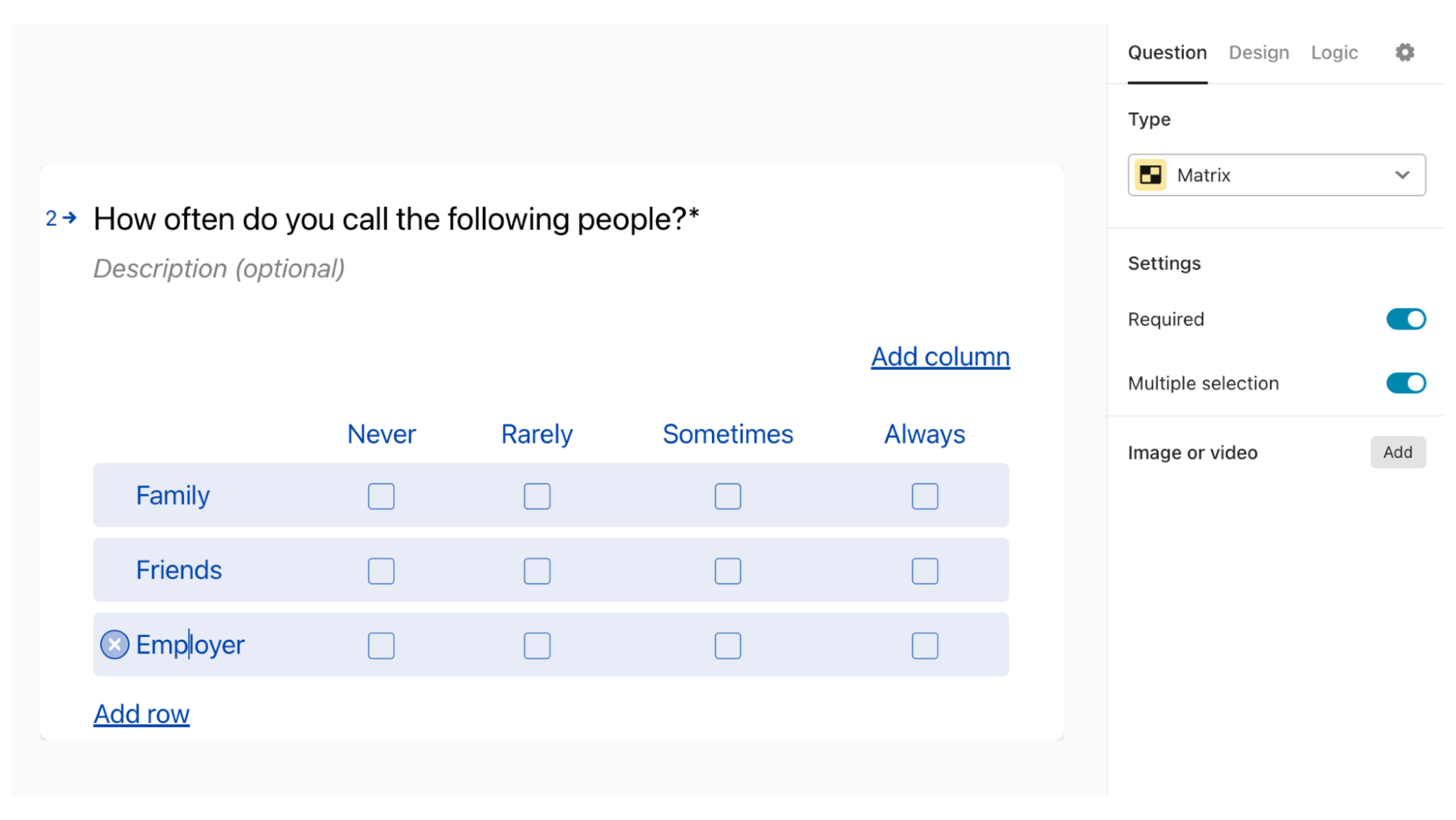
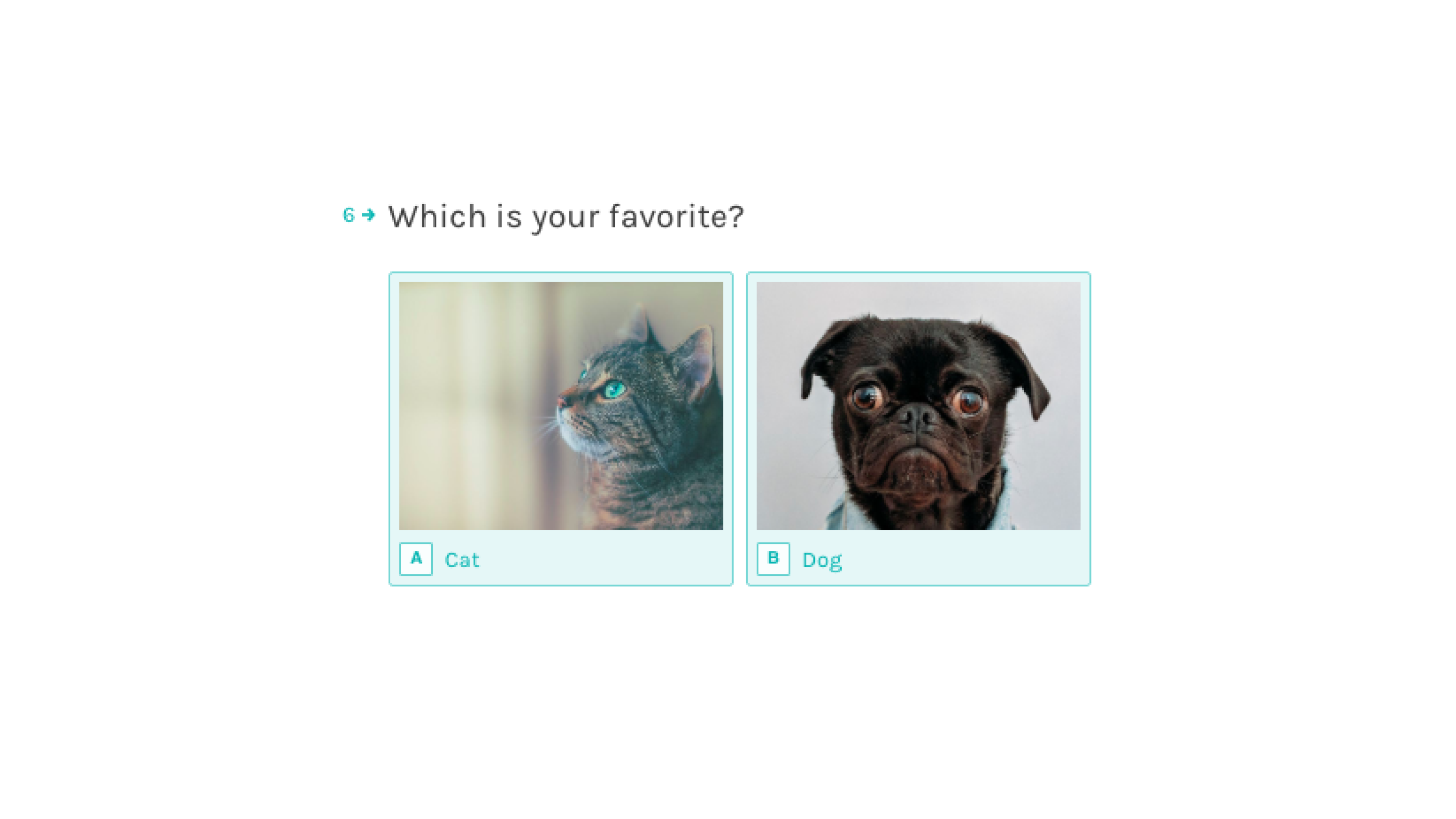

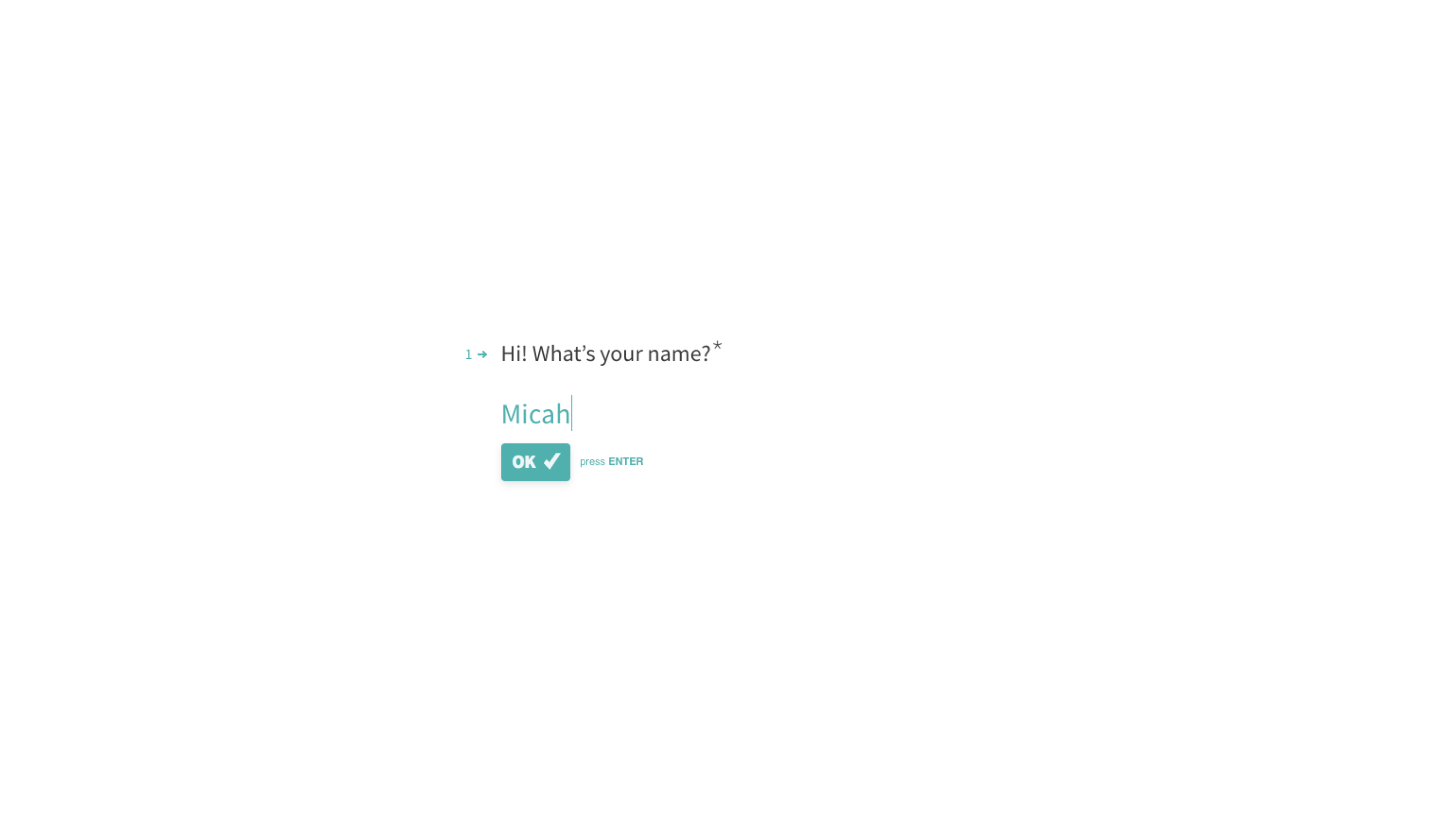
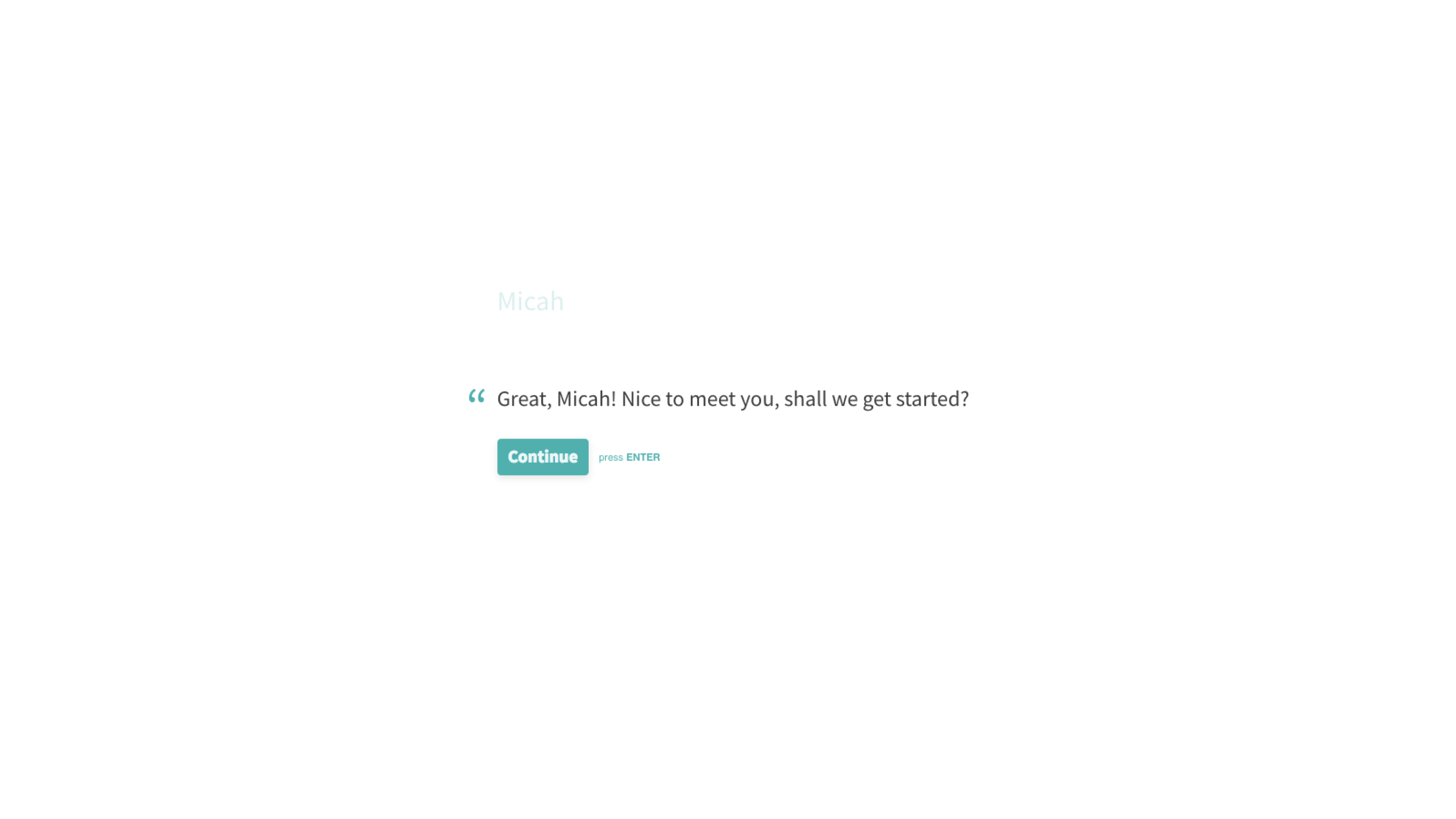
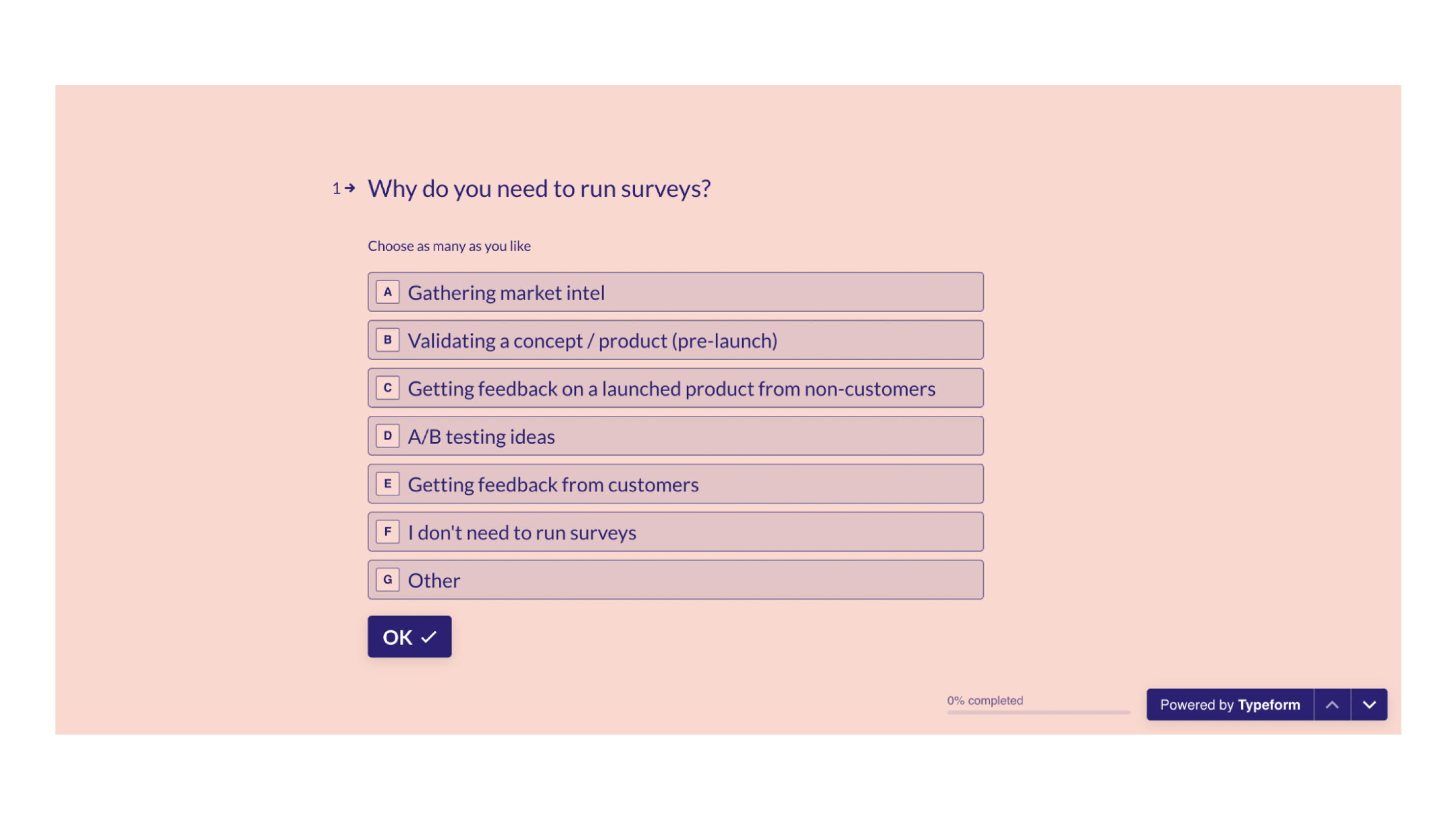

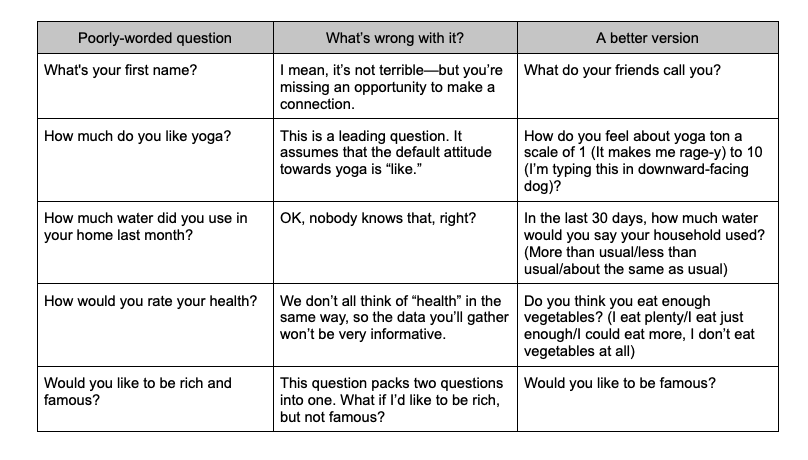
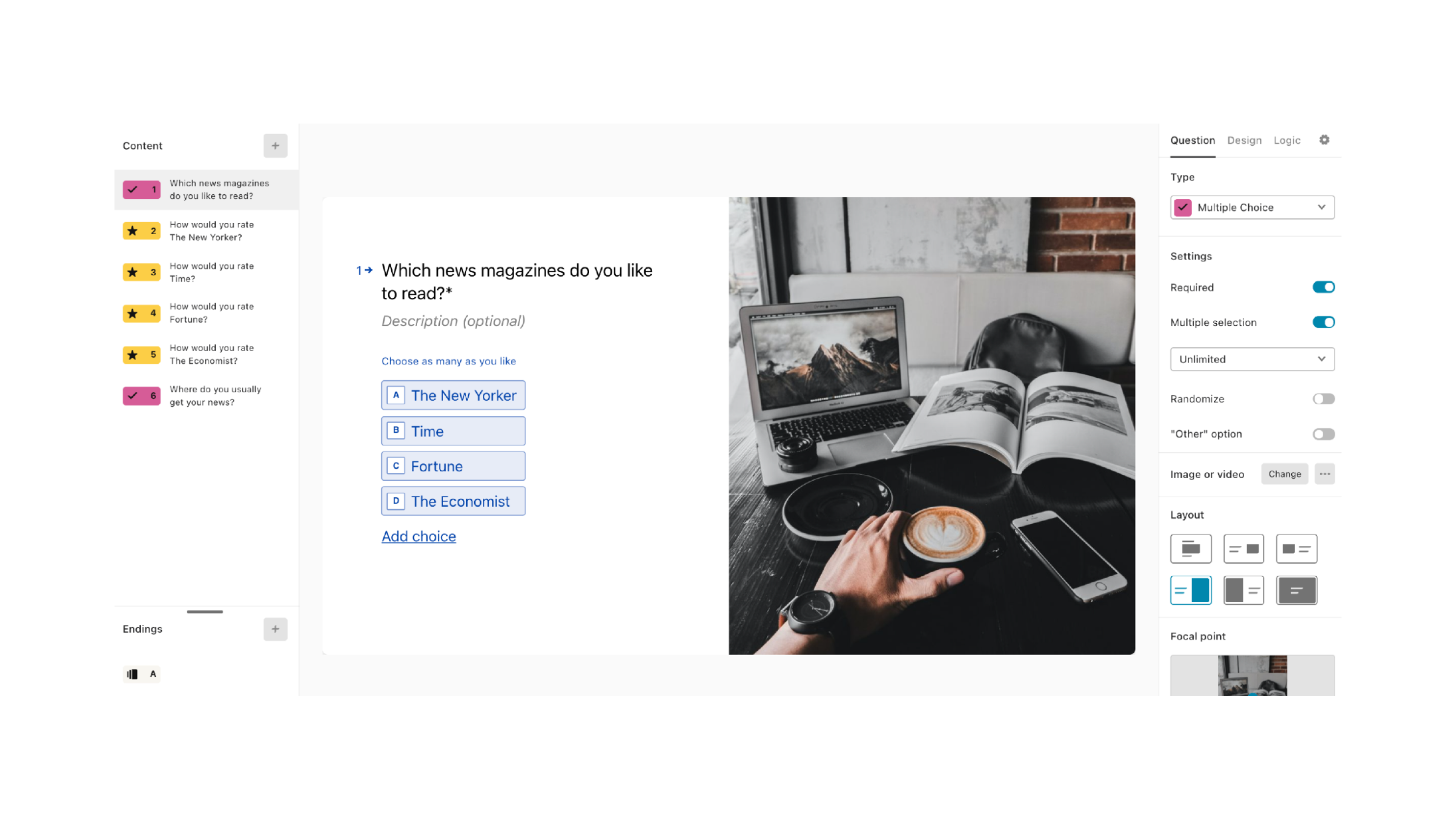



.png)
